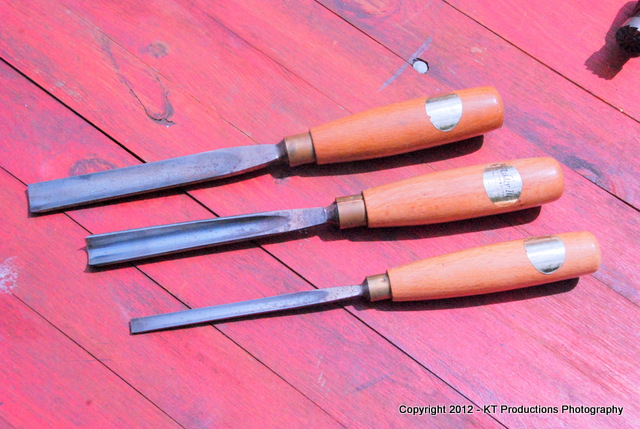condeesteso
Established Member
Reading David Savage's article in British Woodworker regarding new chisels, I have come back to an issue which concerns me. The traditional tool-making forge is dying out.
Years ago I invested in a set of LN A2 chisels, and it took me a very long time to adjust to the conclusion that the steel isn't great. Full stop.
I have read about cryogenic treatment, some fancy Japanese treatments etc... but I suspect that these new alternative treatments are not better, just a production engineering solution to get round hot forging.
I think this is true also of other tools - I found out by accident that there is a region of France where back in the 1920s there were 200 makers of hand-stitched rasps (sounds excessive I know - twenty would surely be enough, but now there are two and one is 200km away).
Then there are holdfasts - Gramercy went to considerable lengths to make holdfasts using a cold process, but is that because they are actually better... I suspect not. Most of us know Richard's forge-made ones are best.
There is something very special about quality forge made chisels of old I think - Sorby, Marples, Ward, Osborn etc etc... the heyday of the Sheffield toolmakers.
I cannot imagine I will ever buy a new chisel again, and if you choose with reasonable care the argument that you have to spend hours fettling and tuning is not my experience.
If it was possible for us collectively to support the last of the tool-making forges, that would be a very good thing indeed I believe. And next time you are told that some new fangled steel treatment is better, ask them how, require proof, demand some solid and sound science... because I reckon there is a fair amount of bull flying around.
Years ago I invested in a set of LN A2 chisels, and it took me a very long time to adjust to the conclusion that the steel isn't great. Full stop.
I have read about cryogenic treatment, some fancy Japanese treatments etc... but I suspect that these new alternative treatments are not better, just a production engineering solution to get round hot forging.
I think this is true also of other tools - I found out by accident that there is a region of France where back in the 1920s there were 200 makers of hand-stitched rasps (sounds excessive I know - twenty would surely be enough, but now there are two and one is 200km away).
Then there are holdfasts - Gramercy went to considerable lengths to make holdfasts using a cold process, but is that because they are actually better... I suspect not. Most of us know Richard's forge-made ones are best.
There is something very special about quality forge made chisels of old I think - Sorby, Marples, Ward, Osborn etc etc... the heyday of the Sheffield toolmakers.
I cannot imagine I will ever buy a new chisel again, and if you choose with reasonable care the argument that you have to spend hours fettling and tuning is not my experience.
If it was possible for us collectively to support the last of the tool-making forges, that would be a very good thing indeed I believe. And next time you are told that some new fangled steel treatment is better, ask them how, require proof, demand some solid and sound science... because I reckon there is a fair amount of bull flying around.

































